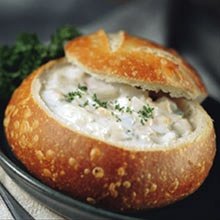 This recipe is simply fantastico!!! If you have the time and the hunger for an exquisite Italian meal, try this. Your guests and family will keep coming back for more. Served with sauteed zuchini squash, garlic, onions, and mushrooms, and REAL garlic bread, linguini or rigitoni and chianti? Oh MY!!
This recipe is simply fantastico!!! If you have the time and the hunger for an exquisite Italian meal, try this. Your guests and family will keep coming back for more. Served with sauteed zuchini squash, garlic, onions, and mushrooms, and REAL garlic bread, linguini or rigitoni and chianti? Oh MY!!For the braciole:
1 1/2 cups milk
2 cups cubed (1/2 inch) day-old Italian bread
2 hard-boiled eggs, peeled and coarsely chopped
1/3 cup chopped fresh Italian parsley
1/4 cup freshly grated Parmigiano-Reggiano cheese
1/4 cup raisins
1/4 cup toasted pine nuts
1 clove garlic, chopped fine
2 pounds beef bottom round, cut into 12 slices, each 1/2-inch thick
12 slices (about 6 ounces) imported Italian prosciutto
1/4 pound imported provolone cheese, cut into 1/4- by 1/4- by 2-inch sticks
Salt, to taste
Freshly ground pepper, to taste
For the sauce:
1/3 cup extra-virgin olive oil
2 small onions (about 8 ounces), chopped
2 cloves garlic, chopped fine
3 (35-ounce) cans crushed Italian plum tomatoes (preferably San Marzano)
1 cup dry red wine
3 tablespoons tomato paste
4 bay leaves
Water, as needed
Salt, to taste
Crushed hot red pepper, to taste
2 pounds sweet or hot Italian sausage
Meatballs:
1/2 pound ground pork
1/2 pound ground beef
1 cup fine, dry bread crumbs
1/3 cup freshly grated Parmigiano-Reggiano cheese
1/2 cup chopped fresh Italian parsley
2 cloves garlic, peeled and chopped fine
1 large egg
1 teaspoon salt
1/4 teaspoon freshly ground black pepper
All-purpose flour
1/4 cup olive oil
1/4 cup vegetable oil
2 pounds rigatoni
2/3 cup freshly grated Parmigiano-Reggiano
For the braciole:
Pour the milk into a medium bowl, add the bread cubes, and let soak until the bread is very soft, 20 to 30 minutes. Drain the bread, squeeze out the excess milk from the cubes with your hands, and return it to the bowl. Stir in the chopped eggs, parsley, Parmigiano-Reggiano, raisins, pine nuts and garlic to create a stuffing. Mix well and set aside.
With the toothed side of a heavy meat mallet, pound each slice of beef into a thickness of about 1/4 inch. Arrange one of the pounded meat slices in front of you with one of the short sides closest to you. Top with a slice of prosciutto, and tap the prosciutto with the back side of a knife so it adheres to the beef. Spread 2 tablespoons of the stuffing along the edge of the meat closest to you, leaving a 1/2-inch border. Place a stick of provolone over the stuffing. Fold the border over the provolone, then fold the side borders in to overlap the edges of the stuffing. Roll into a compact roll about 4 inches long. Secure the end flap with a toothpick. Repeat with the remaining beef and stuffing, then season the rolls with salt and pepper.
To brown the braciole, heat olive oil in a large heavy casserole over medium heat. Stir in the onions and garlic and cook until the onion is wilted, about 5 minutes. Add as many of the braciole as will fit in a single layer and cook, turning as necessary, until golden on all sides, about 7 minutes. If necessary, repeat with any remaining braciole. Adjust the heat under the pan as necessary to prevent the beef from scorching.
For the sauce: Empty the tomatoes into a bowl and squeeze with your hands until coarsely crushed, removing the cores as you do. If necessary, return all the braciole to the casserole. Pour the wine into the casserole, bring to a boil and cook until most of the wine has evaporated. Stir in the tomatoes and bring to a boil. Add tomato paste and bay leaves and stir until the paste is dissolved. Season lightly with salt and crushed red pepper, adjust the heat to simmering, and cook, adding water as necessary to keep the braciole completely submerged until the beef is tender, about 3 hours.
After the braciole have been simmering in the sauce for about 1-1/2 hours, add 2 pounds hot or sweet Italian sausages, poked all over with a fork and browned.
For the meatballs:
Crumble pork and beef into a mixing bowl. Sprinkle the bread crumbs, 1/3 cup grated cheese, parsley and garlic over the meat. Beat the egg with salt and pepper in a small bowl until blended. Pour over the meat mixture. Mix the ingredients with clean hands just until evenly blended. Don't overmix. Shape the meat mixture into 1-1/2-inch balls. Dredge the meatballs in the flour until lightly but evenly coated. Heat 1/4 cup olive oil and the vegetable oil in a large skillet over medium-high heat. Slip as many meatballs into the skillet as will fit without overcrowding. Fry, turning as necessary, until golden brown on all sides, about 6 minutes. Adjust the heat as the meatballs cook to prevent them from overbrowning, and add them to the pot after the braciole have been simmering for 2 hours.
When the meats are cooked, transfer them to platters, spoon a little sauce over them, and cover with aluminum foil to keep warm.
Cook rigatoni according to package directions, drain well and return to the cooking pot. Add enough of the sauce to coat the rigatoni lightly, season with Parmigiano-Reggiano or Pecorino Romano cheese, and transfer the sauced pasta to a large platter. Pass any remaining sauce and some grated cheese separately. Remove the toothpicks before serving. The braciole can be prepared up to two days in advance, then reheated over low heat until warmed through.





